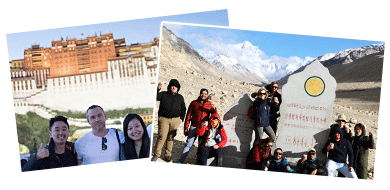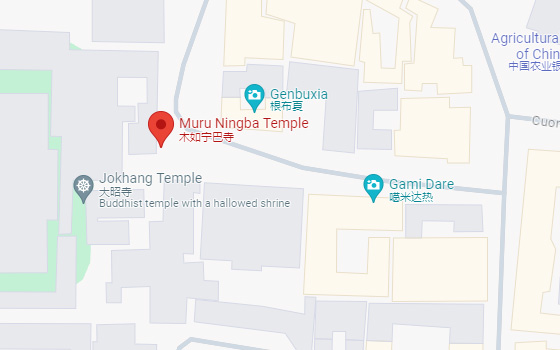
Tibet Tours for All around the Globle are Available Right Now!
It is the best time to join our Tibet small group tour in 2024 at the best local price.
 |
86-28-81754631
|

Muru Nyingba is a small monastery behind Jokhang Temple in Lhasa. It is located immediately behind and east of the Jokhang and may be accessed from the north side of the Barkhor. It was the Lhasa seat of the former State Oracle who had his main residence at Nechung Monastery.
Meru Nyingpa is an unassuming monastery nestled deep within the labyrinthine alleyways and whitewashed walls of the old Barkor neighborhood. Meru Nyingpa has a long history that reaches back to the founding of the Jokhang, and indeed to the origins of Buddhism in Tibet itself, in the seventh century.
Meru Nyingpa has many qualities that make it a unique monastic complex located within the center of Lhasa, the holiest of Tibetan Buddhist cities. The structure of Meru Nyingpa contains the elements that describe the quintessential Tibetan Buddhist monastery. Sections of the essay that follow examine the history, layout, construction, and architecture of Meru Nyingpa to reveal the composition of a Tibetan Buddhist monastery.
It is said that Emperor Songtsän Gampo built the first building here and it is where the great Tibetan scholar, Thonmi Sambhota, completed his work developing the Tibetan alphabet in the first half of the 7th century. The present building, first constructed during the reign of King Ralpacan (806–838 CE), is built like an Indian vihara around a courtyard, with the lhakang ('temple', literally 'residence of the deity') to the north and monks quarters on the three other sides.
The lhakang contains a number of fine murals – the central image being that of Guru Rinpoche (Padmasambhava), with images of the five Nyingma Yidam-Protectors and Tseumar and Tamdrin in glass cases around the walls. The Dhukang or Assembly Hall of Muru Nyingba is a very active temple, built in the 19th century by Nechung Khenpo Sakya Ngape, and renovated in 1986.
There are frescoes portraying the protector deities Dorje Drakden, Tsongkhapa, Atisha, Padmasambhava, Shantarakshita, and King Trisong Detsen. The central image of Avalokiteshvara is new with a copper Padmasambhava to the right and a sand mandala to the left. Behind is an inner sanctum with more images and upstairs is the Tsepame Lhakang with 1,000 small images of Amitayas (or Amitābha) Buddha.
Tips of Meru Nyingba
This small Monastery is behind Barkor Street, it is not listed as an ordinary tourist attraction or recommended in guide books, you need to discover it by yourself.
0 Comment ON "Meru Nyingba"
Check All Tibet Travel FAQs Here